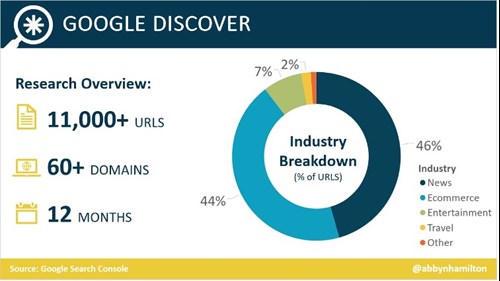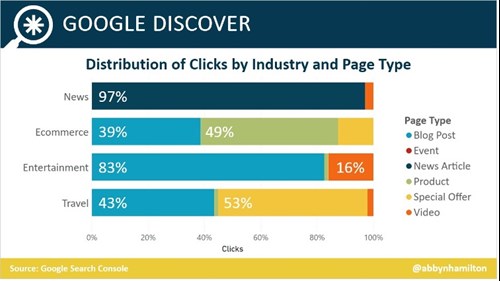When Google launched Discover in 2018, it was branded as the next chapter of search. And, to some degree, it is. Discover serves new, tailored content to a user before they even enter a query, satisfying our appetite for information before we even know exactly what we‘re looking for.
While traditional search requires users to input a query, Discover surfaces content primarily based on what Google's automated systems believe to be a good match with a user's interests. The content in Discover changes regularly based on newly published web content or evolving user interests. In summary, Discover represents a shift in search from a ‘query-based’ to a ‘queryless’ way of getting information.
Since its launch, Discover has grown dramatically. In its first year alone, over 800 million people used the feed each month. Google also revealed that the feed is an increasing source of traffic for publishers. Google’s search console provides a Discover report where all webmasters can monitor their site’s performance on Discover and find out for themselves how big their slice of the pie is.
The major issue with Google’s queryless results is that, given their unforeseen nature, traffic from Discover is less predictable when compared to a query-based search. It should be treated as an occasional bonus rather than set in stone. In addition, there’s no way to create content that explicitly targets Discover's interest matching.
Who thrives in Google Discover?
News sites definitely have a competitive advantage. A study by Search Engine Journal indicates that 46% of Discover results are news sites.

There’s a strong suspicion that news content is shown to a large, broad audience, while content from other industries is targeted to smaller audiences based on specific interests. This strategy would align with Google’s statement that “when it comes to news, we believe it’s important that everyone has access to the same information.”
Among other industries, the most common type of content is heavily interest-focused blog posts.

How to increase your chances of appearing on Discover
Firstly - and most importantly - be mobile-friendly, as Google Discover is only accessible via mobile devices. Ensure that you check the Mobile Usability Report in Google Search Console for any errors.
Secondly, focus on creating outstanding, fresh, and engaging content. Yes, this old chestnut! You need to know your target audience and write with them in mind, so research their interests and hobbies well. Can you find any connection point (topics, events, issues) between your brand and your users? Try to explore this further and transform it into a blog article.
Thirdly, be visual and include high-quality images (at least 1200 pixels wide). According to Google’s data, Discover cards with large images experienced a 5% increase in click-through rate.
It’s also worth taking into consideration that Google loves serving its users with sites that demonstrate E-A-T (Expertise, Authoritativeness, Trustworthiness). By focusing on building these three pillars for your website, you’ll be increasing your chances for success in both traditional and queryless search.
Although you can’t optimise your content for Discover, it’s only well-optimised content that has a chance to thrive in this section. It’s also only content that follows Google’s Discover guidelines that is accessible for crawlers, well understood by crawlers, and indexed.
Undoubtedly, Discover is growing in popularity due to users’ higher mobile phone usage and the extended time we spend online. In fact, in April 2020 the average user spent a quarter of their waking time on their mobile device. The growing significance of this new chapter has also been reflected by Google’s move to regulate the space and introduce manual penalties for all those publishers who do not obey the rules.




